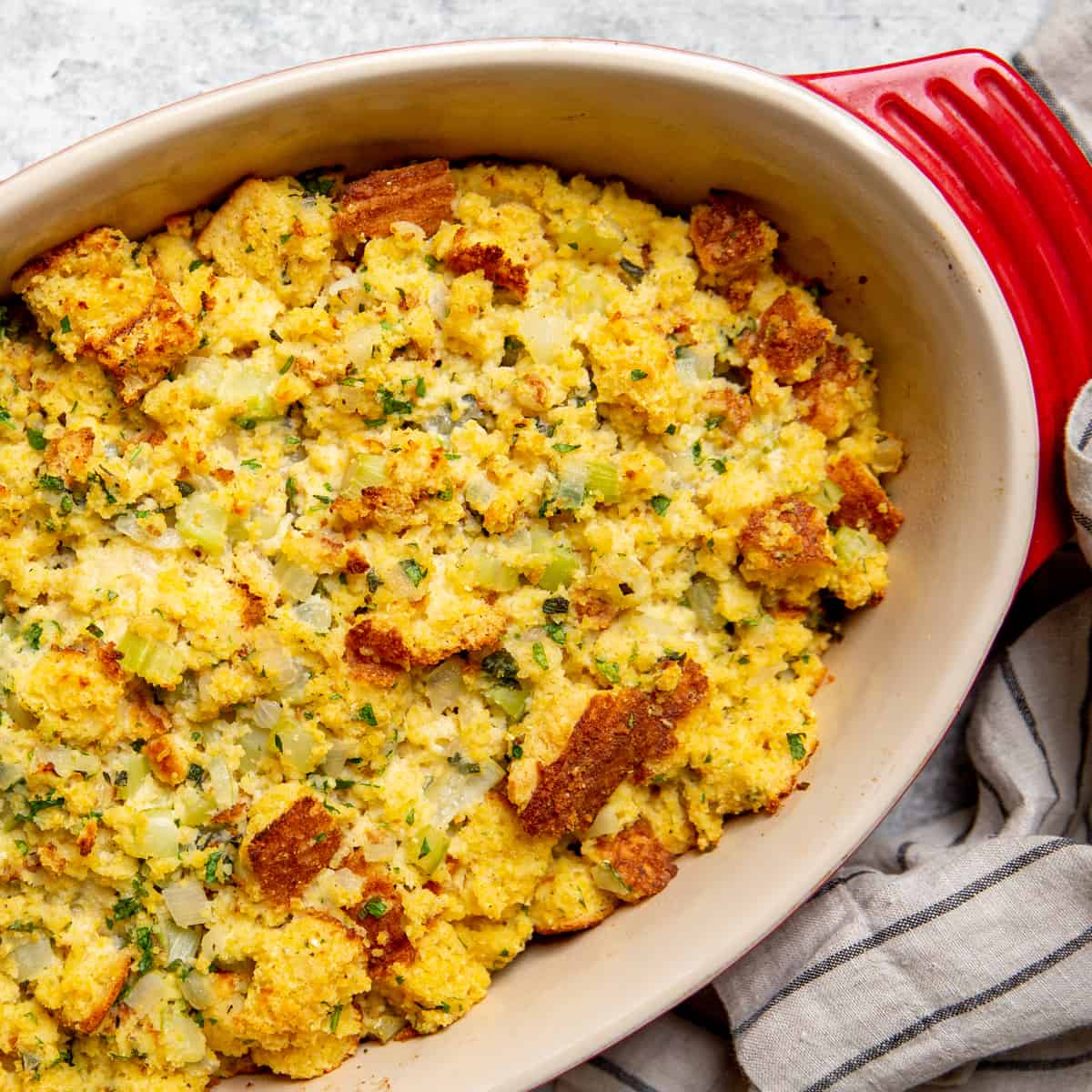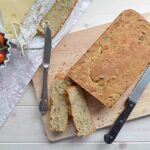Imagine a Thanksgiving table overflowing with the warm, comforting aroma of cornbread stuffing, but without the gluten! This comprehensive guide dives into the art of creating delectable gluten-free cornbread stuffing, exploring diverse recipes, ingredient substitutions, and cooking techniques. We’ll journey through flavorful variations, from savory sausage and chicken iterations to vibrant vegetarian options, each bursting with texture and taste. Prepare to elevate your holiday feast with a stuffing that’s both inclusive and incredibly satisfying.
We’ll uncover the secrets to achieving a perfectly moist and flavorful stuffing, regardless of your chosen cooking method – whether you prefer the traditional oven bake, the quick stovetop approach, or the slow-cooked magic of a slow cooker. Learn how to select the best gluten-free flour blends, discover ingenious egg replacements, and explore a world of exciting vegetable and herb combinations to personalize your stuffing to perfection. From serving suggestions that pair seamlessly with various main courses to visually stunning presentation ideas, this guide is your ultimate resource for mastering gluten-free cornbread stuffing.
Ingredient Substitutions

Crafting the perfect gluten-free cornbread stuffing involves thoughtful ingredient selection. Substituting ingredients can significantly impact the texture, flavor, and overall success of your dish. Understanding the properties of different gluten-free flours and binding agents is key to achieving a moist and flavorful stuffing. Careful consideration of vegetable and herb choices will also contribute to a unique and delicious culinary experience.
Gluten-Free Flour Blends
Several gluten-free flour blends are well-suited for cornbread stuffing, each offering unique characteristics. The choice depends on desired texture and flavor profile. A blend often produces a better result than using a single flour type.
- Bob’s Red Mill 1-to-1 Gluten-Free Baking Flour: This blend mimics all-purpose flour in baking, resulting in a relatively light and fluffy cornbread. It often yields a slightly sweeter cornbread than other blends.
- King Arthur Gluten-Free Measure for Measure Flour Blend: Known for its versatility, this blend produces a tender crumb and performs well in recipes requiring a more neutral flavor. It is a good all-around choice.
- Pamela’s Gluten-Free All-Purpose Flour: This blend tends to create a slightly denser cornbread compared to the others. It’s a good option if you prefer a heartier texture. The flavor is relatively mild.
Alternative Binding Agents
Eggs contribute to the binding and moisture of traditional cornbread stuffing. However, several excellent alternatives exist for gluten-free baking. Choosing the right substitute will maintain structural integrity and moistness.
- Applesauce: Unsweetened applesauce adds moisture and a subtle sweetness, complementing the cornbread’s flavor. Use approximately ¼ cup of applesauce for each egg replaced.
- Mashed Banana: Similar to applesauce, mashed banana adds moisture and a touch of sweetness. It works well in recipes with bolder flavors to balance the sweetness. Use approximately ¼ cup of mashed banana per egg.
- Flaxseed Meal: One tablespoon of flaxseed meal mixed with three tablespoons of water creates a “flax egg,” providing binding properties. This option offers a slightly nutty flavor.
- Chia Seeds: Similar to flaxseed, chia seeds create a gel-like consistency when mixed with water. One tablespoon of chia seeds mixed with three tablespoons of water can replace one egg. This option offers a slightly more neutral flavor.
Vegetable and Herb Substitutions
The versatility of cornbread stuffing extends to its vegetable and herb components. Experimenting with different combinations allows for a wide array of flavor profiles, catering to diverse palates and seasonal availability. Consider the existing flavors and textures when substituting ingredients.
- Classic Combinations: Traditional stuffing often includes celery, onion, and sage. These provide a familiar and comforting base.
- Hearty Additions: Consider adding mushrooms, chestnuts, or cranberries for richer flavors and textures. Roasted root vegetables like carrots and parsnips offer a sweet and earthy counterpoint.
- Herbaceous Variations: Experiment with thyme, rosemary, or parsley to create unique flavor profiles. A blend of herbs often produces a more complex and layered taste.
- Spicy Options: Incorporating jalapeños, poblanos, or a dash of cayenne pepper adds a delightful kick, particularly when paired with sweet vegetables.
Creating a gluten-free cornbread stuffing that rivals – and even surpasses – its traditional counterpart is entirely achievable. By understanding the nuances of gluten-free baking, exploring creative ingredient substitutions, and mastering various cooking methods, you can craft a dish that’s not only delicious but also inclusive and satisfying for everyone at your table. So, gather your ingredients, embrace the culinary adventure, and prepare to impress your guests with a gluten-free cornbread stuffing that’s both memorable and truly exceptional. The rich textures, vibrant flavors, and satisfying aroma will transport your taste buds to a culinary haven, leaving a lasting impression on your guests and cementing your reputation as a culinary maestro.
Essential FAQs
Can I make the stuffing ahead of time?
Yes, you can prepare the stuffing components ahead of time and assemble it a few hours before baking or cooking. Store separately and combine just before cooking for best results.
How do I prevent my gluten-free stuffing from becoming dry?
Use a good quality gluten-free bread or cornbread, add enough moisture (broth or stock), and don’t overbake. Consider adding a little extra fat, like butter or oil.
What are some good gluten-free bread alternatives for stuffing?
Many gluten-free breads work well, but choose one that is relatively dense and holds its shape well. You can also use gluten-free croutons or even gluten-free stuffing cubes specifically designed for this purpose.
Can I freeze gluten-free cornbread stuffing?
Yes, you can freeze cooked or uncooked gluten-free cornbread stuffing. For best results, freeze it in airtight containers and thaw completely before reheating.


